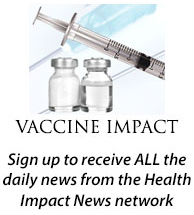 Health Impact News Editor Comments: Europeans are way ahead of the United States when it comes to genetically modified foods. They have had a food labeling law in place since the 1990s, while the US still has none. They also ban GM products imported from the US. But now consumers in Europe are going beyond just GM foods being labeled, and are becoming concerned about GM feed, paticularly soy. They are worried that foods that are not labeled as GM, particularly meat, dairy and poultry products, have GMOs present via GM soy.
Health Impact News Editor Comments: Europeans are way ahead of the United States when it comes to genetically modified foods. They have had a food labeling law in place since the 1990s, while the US still has none. They also ban GM products imported from the US. But now consumers in Europe are going beyond just GM foods being labeled, and are becoming concerned about GM feed, paticularly soy. They are worried that foods that are not labeled as GM, particularly meat, dairy and poultry products, have GMOs present via GM soy.
In the article below from The Telegraph, Lousie Gray reports that Barbara Gallani, Director of Food Safety and Science at the Food and Drink Federation, said most major brands will use meat and dairy from animals fed GM unless they are organic lines. She said GM proteins are not passed from the soy into the animal product and the system “poses no health risks.” But how do they know this? Are there any independent tests that prove this? Do such tests even exist? (highly doubtful)
For a long time no one even knew if soy protein fed to chickens showed up in eggs, because such a test did not exist. However, researchers at Ohio State University developed a test for this and have found that the soy protein isoflavones do in fact appear in egg yolks. So if you eat eggs from chickens fed soy, you are also eating soy protein. It is highly unlikely that tests have been conducted to determine the presence of GM proteins, so Europeans have every right to be concerned about this.
Shoppers kept in dark over GM ingredients
Millions of Britons are unwittingly eating food made using genetically modified soy, a survey of the leading grocery brands has disclosed.
Household name brands like Cadbury Dairy Milk and Bird’s Eye use milk, eggs and meat made from animals that could have been fed GM soy, the research shows. The Daily Telegraph asked leading brands if they could guarantee that their products contained no ingredients from animals fed on GM soy. The responses showed that the animal products in Hellman’s Mayonnaise or Lurpak butter could be from animals fed GM soy, unless it is the organic line.
After the outcry over Frankenfoods in the 1990s, the EU ordered that supermarkets and manufacturers must label direct GM ingredients. However there is no need to tell the consumer if GM has been used further back in the food chain. Campaigners said allowing the livestock industry to become reliant on GM soy is letting in the controversial technology “by the back door”.
Read the Full Article Here: http://www.telegraph.co.uk/earth/agriculture/geneticmodification/8393880/Shoppers-kept-in-dark-over-GM-ingredients.html








